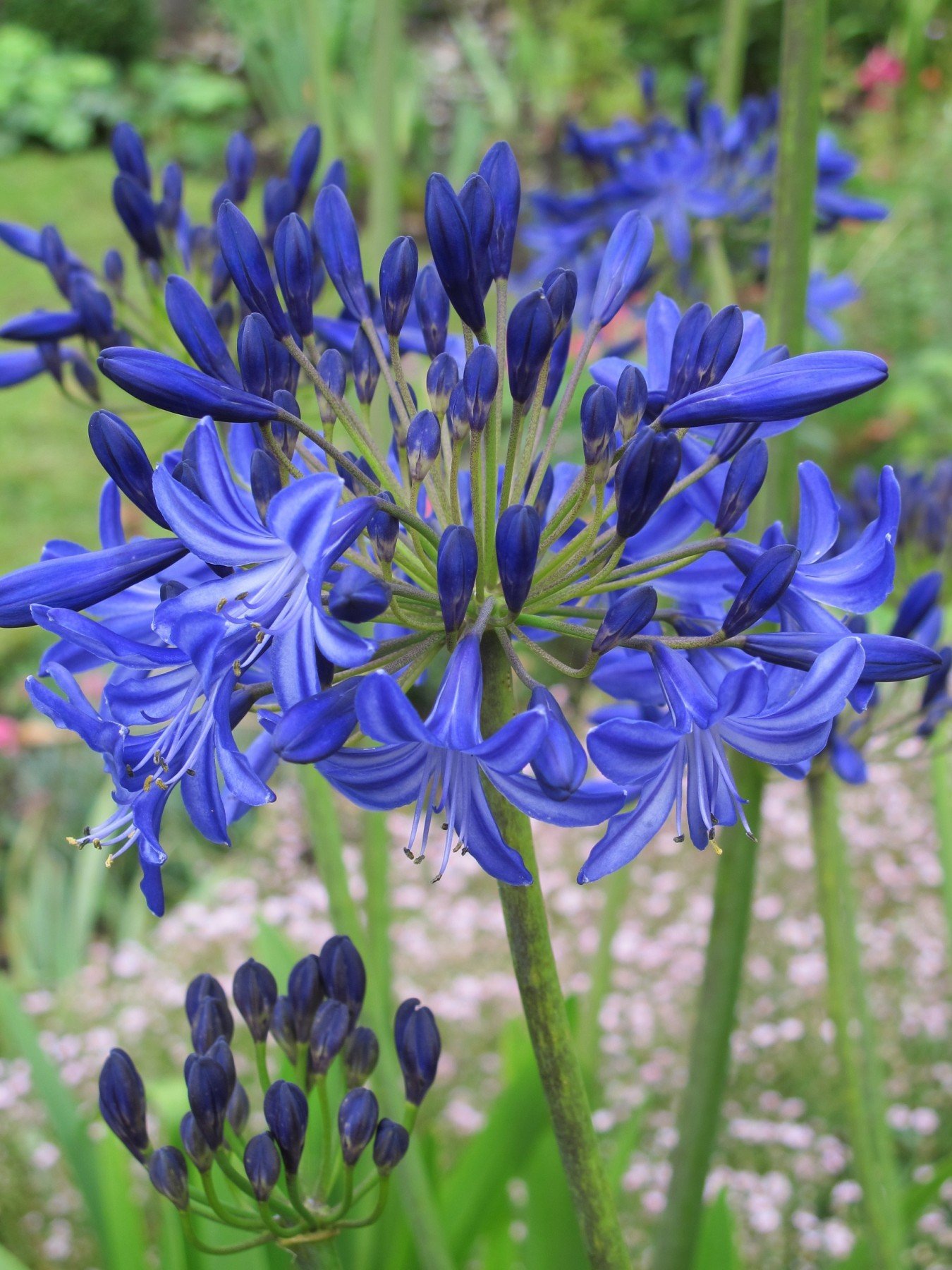Usual Agapanthus Troubles and Exactly How to Fix Them
Usual Agapanthus Troubles and Exactly How to Fix Them
Blog Article
Mastering the Art of Agapanthus Care: Essential Actions for Healthy Development and Lively Blooms
In the realm of gardening, the cultivation of agapanthus stands as a fulfilling endeavor for those that seek to support these sophisticated blooming plants. With their striking blossoms and stylish vegetation, agapanthus has caught the attention of garden enthusiasts worldwide. Nevertheless, achieving ideal growth and lively blossoms needs a nuanced strategy that includes numerous essential steps. From picking the ideal variety to mastering pruning strategies, the journey towards growing thriving agapanthus plants is multifaceted and holds the vital to opening the full potential of these herb treasures.

Picking the Right Agapanthus Variety

When selecting the best Agapanthus selection for your yard, take into consideration variables such as environment suitability, blossom color, and growth habit. Agapanthus, generally known as Lily of the Nile or African lily, comes in a variety of colors ranging from shades of blue and purple to white. Select a bloom shade that enhances your existing yard combination to produce a harmonious landscape. Furthermore, think about the environment in your region to make certain the Agapanthus range you select can thrive in your particular problems. Some varieties are extra forgiving of cool temperature levels, while others like warmer climates. Understanding the growth habit of different Agapanthus selections is essential for correct placement within your yard. Some varieties have a clumping development routine, perfect for boundaries or containers, while others have a more dispersing nature, ideal for ground cover or mass growings. By very carefully examining these factors, you can pick the perfect Agapanthus variety to improve the charm of your yard.
Suitable Growing Conditions
Considering the optimum ecological demands is important for effective Agapanthus farming. Agapanthus plants are delicate to chilly temperature levels and should be safeguarded from frost throughout wintertime months.
To make sure healthy development and vibrant blooms, plant Agapanthus light bulbs at a deepness of concerning 2-4 inches and room them 8-12 inches apart. Including raw material, such as garden compost, to the soil can boost drainage and fertility, promoting durable origin growth. Mulching around the base of the plants aids maintain dampness and reduces weed growth. Routine watering is important, particularly throughout the growing period, to maintain the soil regularly moist but not waterlogged.
Watering and Fertilizing Tips
Keeping appropriate moisture levels and supplying vital nutrients are crucial aspects in the treatment program for Agapanthus plants. When it comes to watering Agapanthus, it is critical to strike an equilibrium. These plants favor regularly wet soil but are vulnerable to root rot if overwatered.
Feeding Agapanthus is important for promoting healthy growth and respected blossoms. Apply a balanced fertilizer, such as a you can find out more 10-10-10 formula, in the very early spring as brand-new development emerges. Repeat this application every 6-8 weeks throughout the expanding period. Stay clear of excessive fertilization, as it can cause lavish vegetation at the expense of blossoms. Always comply with the maker's directions for correct dilution and application techniques. By following these watering and fertilizing suggestions, you can guarantee your Agapanthus plants flourish and create lively, long-lasting flowers.
Pruning Methods for Agapanthus
Trimming Agapanthus plants at the proper times and with appropriate strategies is critical for keeping their health and wellness and promoting ideal growth and blooming. The suitable time to prune Agapanthus is in late winter months or early springtime before brand-new development emerges.
Deadheading spent blossoms can likewise check out here reroute the plant's energy right into producing even more flowers instead than establishing seeds. If you want to collect seeds for propagation, leave some flowers to fully grown and dry on have a peek at this site the plant.
Remember to utilize tidy, sharp tools to make specific cuts and lower the risk of presenting conditions. Agapanthus. Regular pruning will aid maintain your Agapanthus looking healthy and cool while guaranteeing a bountiful screen of lovely blooms
Dealing With Usual Pests and Diseases
After making sure correct pruning techniques for Agapanthus, it is important to deal with common bugs and conditions that can impact the wellness and vigor of these plants. One typical insect that affects Agapanthus is the Agapanthus gall midge.
Another usual problem is fungal fallen leave area, which provides as dark lesions on the leaves. To stop fungal diseases, guarantee good air circulation around the plants, stay clear of overhanging watering, and eliminate any contaminated fallen leaves promptly. In addition, Agapanthus plants can endure from root rot if they are planted in inadequately draining soil. To prevent this, plant Agapanthus in well-draining dirt and stay clear of overwatering. By being alert and taking timely action against bugs and diseases, you can help your Agapanthus plants thrive and produce vivid flowers.

Final Thought
Finally, grasping the art of agapanthus treatment includes choosing the ideal range, supplying excellent planting problems, correct watering and fertilizing, appropriate pruning techniques, and dealing with usual insects and conditions. By adhering to these important steps, you can make certain healthy growth and dynamic blooms for your agapanthus plants. Bear in mind to regularly monitor and keep your plants to advertise their overall wellness and durability.
To guarantee healthy development and dynamic blooms, plant Agapanthus bulbs at a deepness of regarding 2-4 inches and space them 8-12 inches apart. By complying with these watering and feeding ideas, you can ensure your Agapanthus plants thrive and generate vibrant, lasting blooms.
One usual insect that affects Agapanthus is the Agapanthus gall midget. Furthermore, Agapanthus plants can suffer from origin rot if they are planted in poorly draining dirt. By complying with these necessary steps, you can make certain healthy growth and lively blossoms for your agapanthus plants.
Report this page